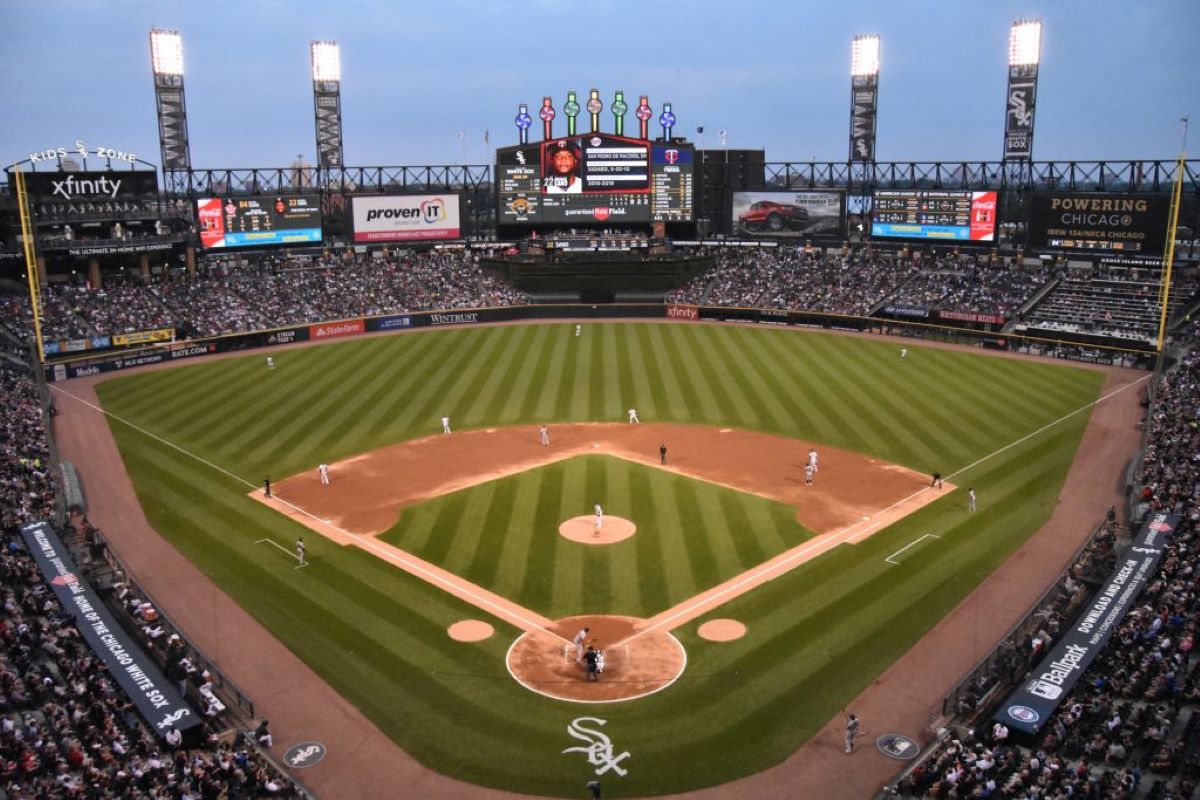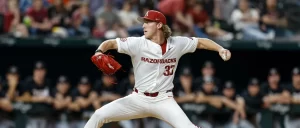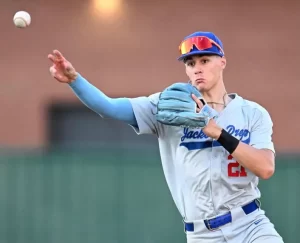2023 MLB Draft Preview: Chicago White Sox

Photo via Mike Rankin/FutureSox
The 2023 Major League Baseball Draft will take place live in Seattle, beginning on Sunday July 9th, 2023 at 7:00 PM eastern time. For the third consecutive season, the festivities will be featured around the league’s All-Star weekend. The first night will encompass rounds one and two. Rounds three through ten will take place on Monday, July 10th starting at 2:00 PM eastern with the same schedule for rounds 11-20 on Wednesday, July 11th.
For the first time ever, the first six selections (Pittsburgh, Washington, Detroit, Texas, Minnesota, Oakland) were determined by a draft lottery. The Pittsburgh Pirates won the lottery and they will make the top overall selection. Their total bonus pool equals $16,185,700 and the first pick comes with a staggering, record slot value of $9,721,000. The total pool is the third highest ever and the slot at No. 1 is by far the most significant of all time.
15 clubs will have eight figure bonus pools including the Detroit Tigers ($15,747,200), Washington Nationals ($14,502,400), Minnesota Twins ($14,345,600) and Oakland Athletics ($14,255,600). The Twins jumped from 13th overall to 5th overall in the draft lottery; adding $2.3 million to their bonus pool. The Philadelphia Phillies have the smallest bonus pool in the class with a total $5,185,000. The New York Yankees have just $5,299,400 to spend while the San Diego Padres will operate with $5,416,000.
Each draft pick in the first ten rounds comes with an assigned value attached. When adding all of the bonus slots together, that is how bonus pools are created. After the tenth round, clubs can spend $125,000 on players without any bonus pool restrictions. For a bonus above $125,000 however, the overage counts against the bonus pool. If a player selected in the top ten rounds doesn’t sign, the club loses the ability to spend that bonus slot.
Read more in-depth about slot rules here: Draft Pools and Pick Values
There are also penalties for clubs choosing to exceed their assigned bonus pool. Exceeding the pool by 0-5 percent comes with a 75% tax on the overage. If a club exceeds their pool by 5-10 percent, a first rounder would be forfeited along with the 75% overage while first and second round selections would be required to be forfeited if going over 10%. Spending over 15% above the pool would require the spending club to forfeit two future first round selections.
There have been 11 drafts with bonus pool rules to date. Clubs have frequently outspent the bonus pool amounts but nobody has ever gone over 5 percent and dealt with the penalties attached. In 2022, 23 clubs spent past their bonus pool number which was a record number of teams to do so. The Chicago Cubs, Los Angeles Dodgers, St. Louis Cardinals and San Francisco Giants have spent over their pool every season. The Colorado Rockies and Minnesota Twins have never gone over in any draft.
White Sox Business
The Chicago White Sox will make the 15th selection in the first round and the slot value for that pick is $4,488,600. Their total bonus pool in the top ten rounds carries a total of $9,072,800. The franchise has frequently spent over their bonus pool amount since the implementation of the new system. This year should be no different. If the White Sox chose to spend 5% above their pool, their total bonus amount would increase to $9,526,440 after adding $453,640 to their total. Ownership would then be required to pay a 75% tax on the overage.
Last season’s White Sox draft results: 2022 FutureSox Draft Tracker
In last year’s draft, the White Sox began the event with a total bonus pool of $6,289,100. After going over-slot to sign Noah Schultz, Peyton Pallette and Jonathan Cannon with their first three picks, the club spent $6,542,900 which meant they went $253,800 above the suggested pool. The White Sox paid a 75% tax on that overage and also spent another $1 million total for bonuses on day three that don’t count toward the spending pool. It should be expected that the White Sox will exceed their bonus pool once again in 2023, using a rough estimate of $9.5 million as their target number for bonuses.
Bonus Slots for White Sox 2023 Draft
- #15 (1st Round): $4,488,600
- #51 (2nd round): $1,659,800
- #84 (3rd Round): $833,900
- #116 (4th Round): $574,600
- #152 (5th Round): $404,700
- #179 (6th Round): $317,400
- #209 (7th Round): $248,300
- #239 (8th Round): $199,900
- #269 (9th Round): $178,000
- #299 (10th Round): $167,600
Mike Shirley in the big chair
This July’s draft will be director of amateur scouting Mike Shirley’s fourth in his current role with the White Sox. Divergent paths have been taken under Shirley’s leadership and organizational philosophy has seemingly shifted since his elevation to the big chair. He has made 45 picks in his three years on the job and some noticeable trends have formed during the process. A bigger emphasis has been placed on prep talent, premium upside has been prioritized, pitching injuries have been ignored and midwest players will always be a focus.
The White Sox aren’t afraid to draft high school players. That has been made very clear by the current scouting department on the amateur side. It started in 2019 with the over-slot additions of Matthew Thompson and Andrew Dalquist in the second and third rounds respectively. In his first year on the job, the veteran scout only had five picks to work with and the franchise decided to spend $3 million on then Texas prep righty Jared Kelley.
The strategy was further utilized with the additions of Colson Montgomery, Wes Kath, Tanner McDougal and Noah Schultz over the last two seasons. The White Sox hadn’t selected a prep player in the first round since whiffing hard on outfielder Courtney Hawkins out of Texas back in 2012. The organization drafted right hander Kris Honel out of Providence Catholic High School in 2001 and it went so poorly and they ignored the demographic entirely for nearly the next decade.
Garrett Crochet, Colson Montgomery and Noah Schultz are all different but premium upside has been the trend. Crochet was sold as the best college pitcher on the board. He’d endured low usage and high octane stuff with Shirley calling the southpaw a future mid-rotation starter. Montgomery was a cold weather, multi-sport athlete who has excelled as a pro so far and has established himself as a top-30 prospect in the sport. Schultz has the makings of a top-of-the-rotation talent and he’s pitching in Low-A. The White Sox are a true wild-card in the 2023 draft and they could go any direction in the first round.
Draft Strategy and Potential Options
The White Sox are a true wild card in the first round and they pick in a spot that will be tough to predict accurately. Club decision makers likely don’t even have a firm grasp on the way the board will unwind. There are five players that seem like a consensus at the top of the class. Others like Virginia catcher Kyle Teel (FutureSox Draft profile), Wake Forest righty Rhett Lowder (FutureSox Draft Profile) and Oregon prep right hander Noble Meyer (FutureSox Draft Profile) should be off the board when the White Sox make their first selection as well.
Throughout the process, the White Sox have been linked to bats on the prep and college side. The organization hasn’t been afraid to tab pitching in the first round and it might even be their preference once again. It’s a shallow pitching class, though, and the board very likely will dictate that a position player should be the selection. There’s an outside chance that Tennessee’s Chase Dollander could fall into range and the White Sox would likely pounce on that opportunity if presented. Florida’s Hurston Waldrep could be an option but it’s a frightening proposition with his splitter usage and command issues. Josh Nelson highlighted the right hander recently at SoxMachine.
The White Sox brought a heavy presence to check out a number of college players during the Fayetteville Regional. Outfielder Chase Davis of Arizona has been mocked to the White Sox (along with everyone else) at major publications and we wrote about his rise during regional play as well. Third basemen Brayden Taylor (FutureSox Draft Profile) of Texas Christian University and Miami’s Yohandy Morales (FutureSox Draft Profile) appear to be firmly on the radar as options too.
Taylor has risen throughout the process and he could go in the top ten. Morales was a favorite for White Sox’s scouts in 2020 and was a consideration for them out of high school. Matt Shaw of Maryland (FutureSox Draft Profile), Tommy Troy of Stanford (FutureSox Draft Profile) and Jacob Gonzalez (FutureSox Draft Profile) could be options on the college side along with Vanderbilt outfielder Enrique Bradfield Jr. and Grand Canyon’s Jacob Wilson. There has been some chatter that the White Sox’s desired plan could include signing a college player under-slot to reallocate resources on prep talent in later rounds. That plan could come into focus over the next week.
On the prep side, there are a multitude of options who could could be in play with the 15th overall pick. The organization went this route in 2021 and it’s paid off to date with Colson Montgomery looking like a great value so far. Georgia infielder Colin Houck (FutureSox Draft Profile) is believed to be of interest but there isn’t a high likelihood that he’ll be available for the White Sox at this rate. Florida prep third baseman Aidan Miller (FutureSox Draft Profile) and Texas prep catcher Blake Mitchell (FutureSox Draft Profile) have been linked to the Sox throughout the process as well.
Strawberry Crest Florida’s Arjun Nimmala hasn’t been heavily linked to the White Sox this spring but his tantalizing set of tools and upside would likely interest the scouting department if he happens to be on the board in the first round. One name that has come up recently in regards to the White Sox on the high school side is Eaton, Colorado’s Walker Martin. The 19-year-old is also a high level high school quarterback but scouts think he can hit for average and power from the left side. He’s committed to Arkansas and a Colorado prep hitter hasn’t gone in the top five rounds since 2011.
In regards to the rest of the draft, the White Sox are expected to heavily target pitching on the college and prep side. One name to keep an eye on in the second round is Mahomet, Illinois’ Blake Wolters. Wolters is a 6-4, 215 pound right handed pitcher who fits the profile of what the White Sox prefer. The Arizona commitment was an all-area basketball player in Illinois and he frequently pumps his fastball into the high 90’s. He’s done a better job of commanding a three pitch mix this spring and he’s expected to sign a professional contract.
Texas prep right hander Travis Sykora could be an option as well but the demographic is risky. Fully mature and developed prep pitchers without much growth remaining haven’t had a great track record. The 6-6, 230 pound righty possesses the biggest fastball in the prep class and he dominated the showcase circuit. He’s a 19-year-old, pounds the zone and repeats his delivery well. Another option if Wolters is off the board might be IMG Academy’s Cameron Johnson. The 6-5, 240 pound southpaw has shown pure stuff highlighted by a plus slider and he was very impressive at the recent MLB Draft Combine.
The White Sox will be interested in continuing to add pitching throughout day two and day three of the 2023 MLB Draft. On the college side, South Carolina righty Jack Mahoney and Ohio State southpaw Isaiah Coupet are players of interest and Ryan Brown of Ball State could be an option as well due to the numerous connections to the White Sox’s scouting staff. Christian Oppor is an interesting connection from Gulf Coast State Junior College. The 6-2, 175 pound lefty was selected by the Oakland Athletics in the 11th round as the best prep pitcher out of Wisconsin last year. He’ll re-enter the draft if he can’t come to terms. The southpaw has a basketball background and he’s long and loose with athleticism and projection remaining. The fastball gets up to 98 mph but his secondaries are inconsistent.
This shouldn’t be a surprise but there’s a pair of Indiana prep righties and the White Sox have been linked to both. Cameron Tilly is a 6-2, 190 pounder from Castle, Indiana and he’s committed to Auburn. The former quarterback has shown a plus slider that registers 3,000 RPM with a high spin curveball and low 90’s fastball as well. The 19-year-old is strong and athletic but doesn’t have much physical projection left. Bishop Letson out of Floyd Central High School has popped this spring. The 6-4, 170 pounder is a Purdue commit with an athletic delivery and high ceiling. The fastball should add velocity but already has high spin rates and big ride. Both of these players could interest Mike Shirley and staff on day two.
Scouring The Land of Lincoln
While the White Sox’s ties to Indiana players should be well documented, the Illinois class is stellar this year as well. The scouting department likes local players and while there have been no direct ties, any of these players could be possibilities. Our editor-in-chief Mike Rankin saw Homewood Flossmoor’s Dillon Head (FutureSox Profile) earlier this season and he’s expected to go in the first round of the draft. Earning Curtis Granderson comparisons from close observers, Head is the best position player from the Chicagoland area in years.
George Wolkow is a 17-year-old lefty slugger from Downers Grove North High School. He reclassified into the 2023 draft and impressed at the recent MLB Draft Combine. The 6-7, 240 pounder profiles in an outfield corner and he’s very physical with massive raw power. There are hit tool concerns and a long left-handed swing presently but he won’t be 18 until next January. He’s committed to South Carolina but should get a big enough bonus to sign.
Illinois hasn’t had a prep catcher selected in the top five rounds since 2012 but Naperville Central High School’s Colin Barczi could change that. The 6-2, 210 pounder has posted sub two second pop times behind the dish. The right-handed hitter has displayed raw power and produced on the showcase circuit against top competition. There are some hit tool concerns as well. He will be tough to sign with a Vanderbilt commit and the ability to re-enter the 2025 draft as a sophomore eligible player.
In addition to Wolters, Zander Mueth of Belleville East and Parker Detmers of Glenwood are firmly in the top 200 mix to be selected. Mueth is a 6-6, 205 pound righty who has drawn comparisons to fellow St. Louis area native Tanner Houck. He’s a low slot righty with a mid-nineties fastball and a Mississippi commitment. Detmers is the younger brother of big leaguer Reid but he’s less athletic with more power. The 6-4, 215 pound righty throws three pitches for strikes but needs to add velocity and he probably ends up at Louisville.






Wonderful preview. Thanks!
Thanks Steve.
No linkage to Mitch Jebb?
Not that I’ve heard specifically but it wouldn’t be a surprise
Daydreaming that a franchise catcher or second baseman could be unearthed in the draft. It’s probably more wise to draft as much pitching as possible.